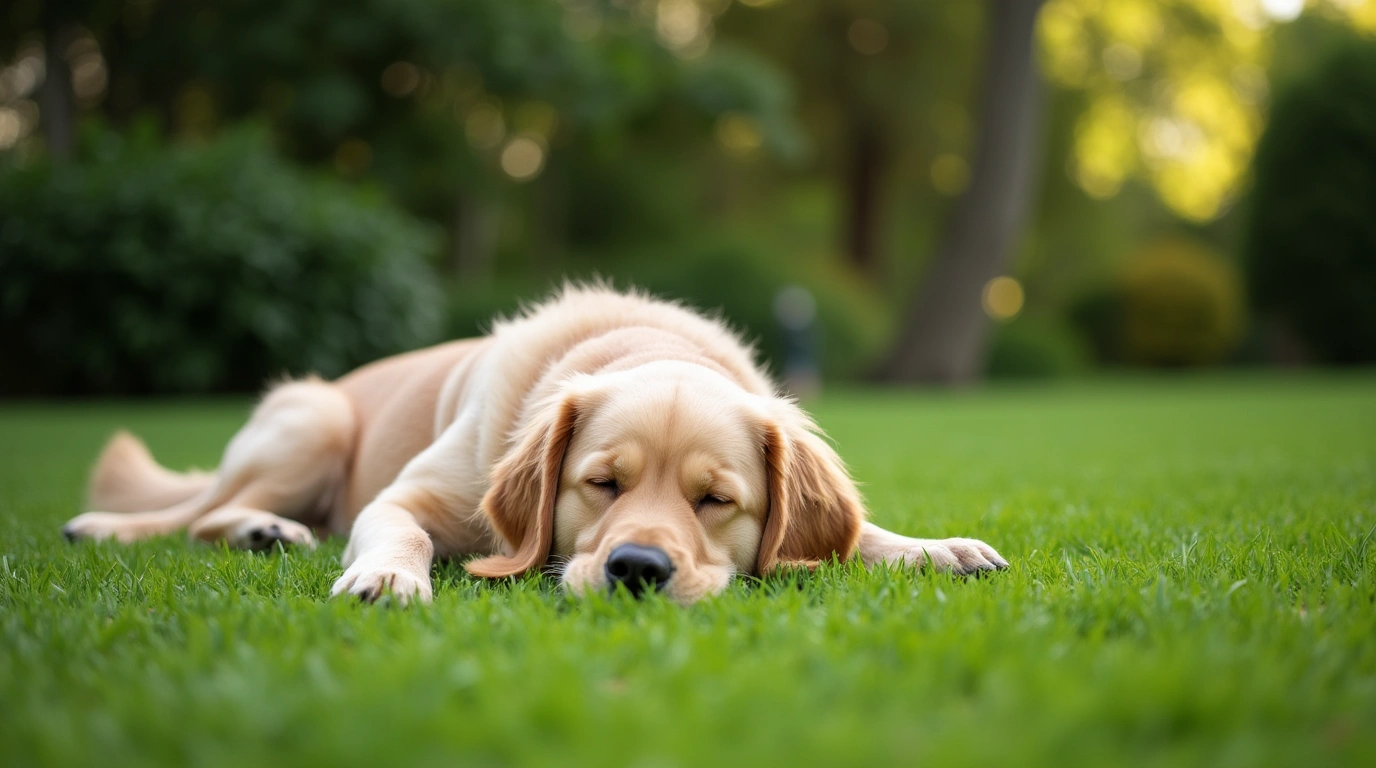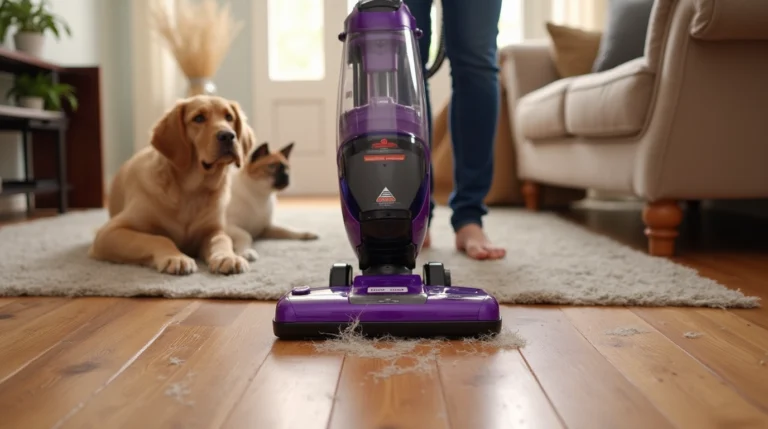Discover 6 effective pet safe weed killer options and 2 important risks to avoid. Protect your pets while maintaining a beautiful, weed-free yard with these expert solutions.
Table of Contents
Maintaining a beautiful, weed-free lawn while ensuring the safety of your beloved pets presents a significant challenge for many homeowners. Traditional weed killers often contain harsh chemicals that can pose serious health risks to dogs, cats, and other animal companions who love to explore, sniff, and sometimes even taste the outdoor environment. As awareness of these dangers has grown, so too has the demand for effective pet safe weed killer alternatives that can tackle unwanted plants without putting four-legged family members at risk. Whether you have a curious puppy who investigates everything with their mouth, an outdoor cat who grooms after rolling in the grass, or other pets who spend time in your yard, finding weed control solutions that prioritize their safety is essential. This comprehensive guide explores six proven pet-friendly weed control options that effectively manage unwanted plants while keeping animals safe, along with two important risks every pet owner should understand about weed control products. By examining both natural remedies and commercial products formulated with pet safety in mind, this article will help you make informed decisions about maintaining your outdoor spaces in a way that protects both your landscaping and your pets’ wellbeing.

Understanding the Risks of Conventional Weed Killers to Pets
Common Chemicals in Traditional Weed Killers
Before exploring pet-safe alternatives, it’s important to understand what makes conventional weed killers potentially dangerous. Most traditional herbicides contain one or more of these problematic chemicals:
- Glyphosate: The active ingredient in products like Roundup, linked to cancer concerns in both humans and animals
- 2,4-D (2,4-Dichlorophenoxyacetic acid): Found in many “weed and feed” products, can cause skin irritation, gastrointestinal upset, and potential neurological issues
- MCPP (Mecoprop): Often included in herbicide mixtures, toxic if ingested and linked to kidney and liver damage
- Dicamba: Commonly used for broadleaf weed control, can cause respiratory issues and neurological symptoms
- Atrazine: A pre-emergent herbicide that has been linked to reproductive problems in animals
Dr. Karen Becker, DVM, notes that “many conventional weed killers contain chemicals that can remain active in the soil for weeks or even months after application, creating an ongoing exposure risk for pets who interact with treated areas.”
How Pets Are Exposed to Weed Killers
Pets can be exposed to herbicides through multiple pathways:
- Direct contact: Walking on treated grass and absorbing chemicals through paw pads
- Ingestion: Eating treated grass or licking paws/fur after contact
- Inhalation: Breathing in spray mist during or shortly after application
- Secondary ingestion: Consuming prey animals (like rodents) that have been exposed
- Water contamination: Drinking from puddles in treated areas
Research published in the journal “Science of The Total Environment” found that dogs in households using chemical herbicides had higher urinary levels of 2,4-D than dogs in households that didn’t use these products, confirming that exposure does occur in real-world settings.
Symptoms of Herbicide Poisoning in Pets
Recognizing the signs of herbicide exposure can help pet owners respond quickly if accidental exposure occurs. Common symptoms include:
- Digestive distress: Vomiting, diarrhea, excessive drooling
- Respiratory issues: Coughing, difficulty breathing, nasal discharge
- Skin reactions: Rash, redness, excessive scratching
- Neurological symptoms: Muscle tremors, incoordination, seizures
- Behavioral changes: Lethargy, unusual aggression, disorientation
According to the ASPCA Animal Poison Control Center, herbicide exposure accounts for thousands of pet poisoning calls annually, with symptoms ranging from mild irritation to life-threatening conditions requiring emergency veterinary care.
With these risks in mind, let’s explore safer alternatives that effectively control weeds while protecting your pets.
Safe Option #1: Vinegar-Based Weed Killers
The Science Behind Vinegar as a Herbicide
Vinegar has emerged as one of the most popular pet safe weed killer options, and for good reason. Here’s how it works:
- Acetic acid content: The active ingredient in vinegar is acetic acid, which disrupts cell membranes in plants
- pH impact: Vinegar’s high acidity (typically pH 2-3) damages plant tissues on contact
- Effectiveness factors: Concentration, application timing, and weed type all influence success rates
- Selective action: While vinegar affects most plants it contacts, it’s most effective on young, annual weeds with thin cuticles
Standard household vinegar contains about 5% acetic acid, while horticultural vinegars specifically formulated for weed control can contain 10-30% acetic acid. Higher concentrations work more quickly and effectively but require more careful handling.
DIY Vinegar Weed Killer Recipes
Creating your own pet safe weed killer with vinegar is straightforward:
Basic Vinegar Spray
- 1 gallon white vinegar (5% acetic acid)
- 1 tablespoon liquid dish soap (helps vinegar stick to weed surfaces)
- Optional: 1 cup table salt (enhances effectiveness but may affect soil quality)
Enhanced Vinegar Solution
- 1 gallon horticultural vinegar (10-20% acetic acid)
- 2 tablespoons orange oil or d-limonene
- 1 tablespoon liquid dish soap
- 1/4 cup Epsom salts
Dr. Emily Cooper, plant scientist and pet owner, explains: “The dish soap acts as a surfactant, breaking down the waxy cuticle on weed leaves and allowing the vinegar to penetrate more effectively. This simple addition can significantly improve results.”
Application Tips and Precautions
While vinegar-based weed killers are generally pet safe, proper application techniques matter:
- Apply during dry, sunny weather: Sunlight enhances the burning effect on plant tissues
- Target application: Use a spray bottle with a stream setting to minimize drift
- Timing matters: Apply in the morning after dew has dried but before afternoon heat
- Protect desired plants: Vinegar is non-selective and will damage any plant it contacts
- Multiple applications: Stubborn or perennial weeds may require repeated treatments
- Keep pets away until dry: While generally safe, concentrated vinegar can cause minor irritation if pets walk through wet areas
Importantly, while vinegar is considered a pet safe weed killer, horticultural vinegar with higher acidity levels still requires careful handling. Always keep pets inside during application and until the solution has completely dried.
Customer experience: “I’ve been using a simple vinegar-salt-soap mixture on my driveway cracks and garden paths for three years. It works amazingly well on small weeds, and I never worry about my dogs getting sick from it like I did with chemical sprays. You do need to reapply more often, but the peace of mind is worth it.” – Maria S., Boston
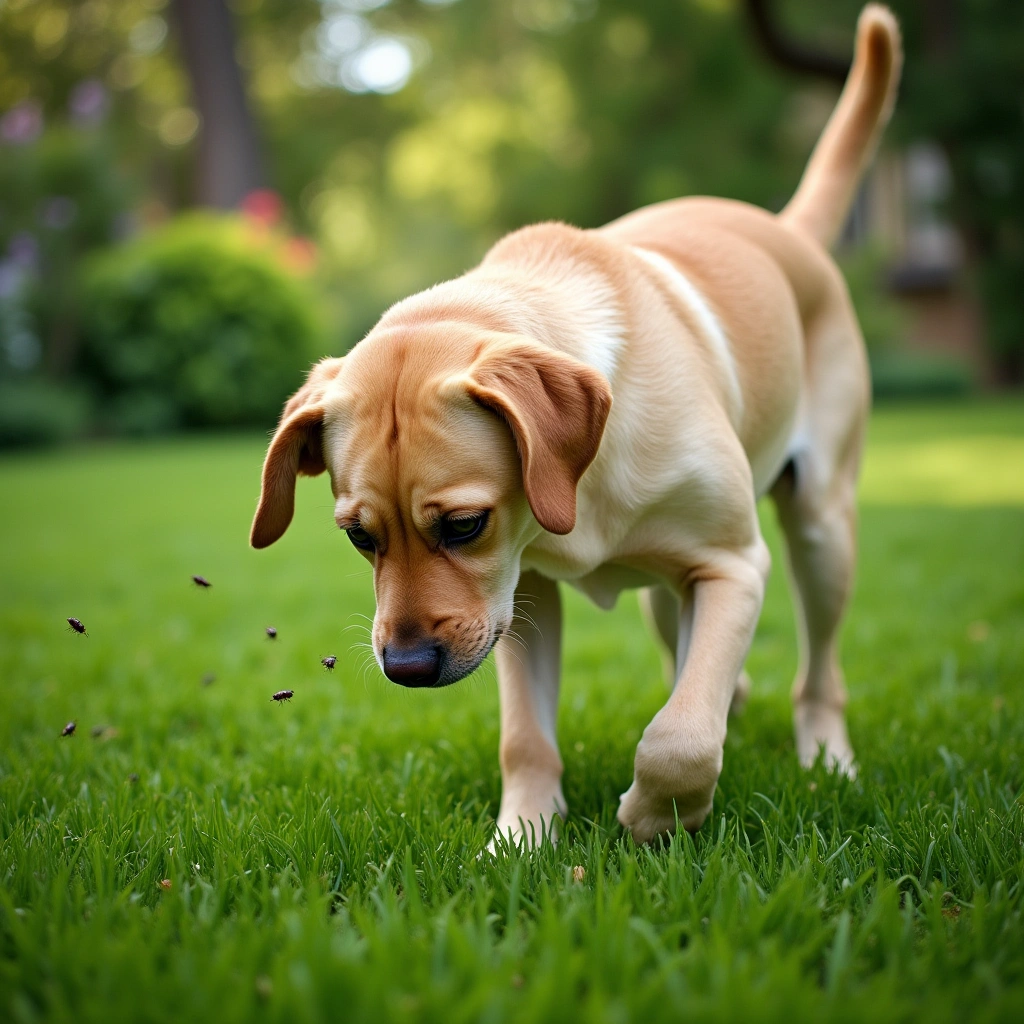
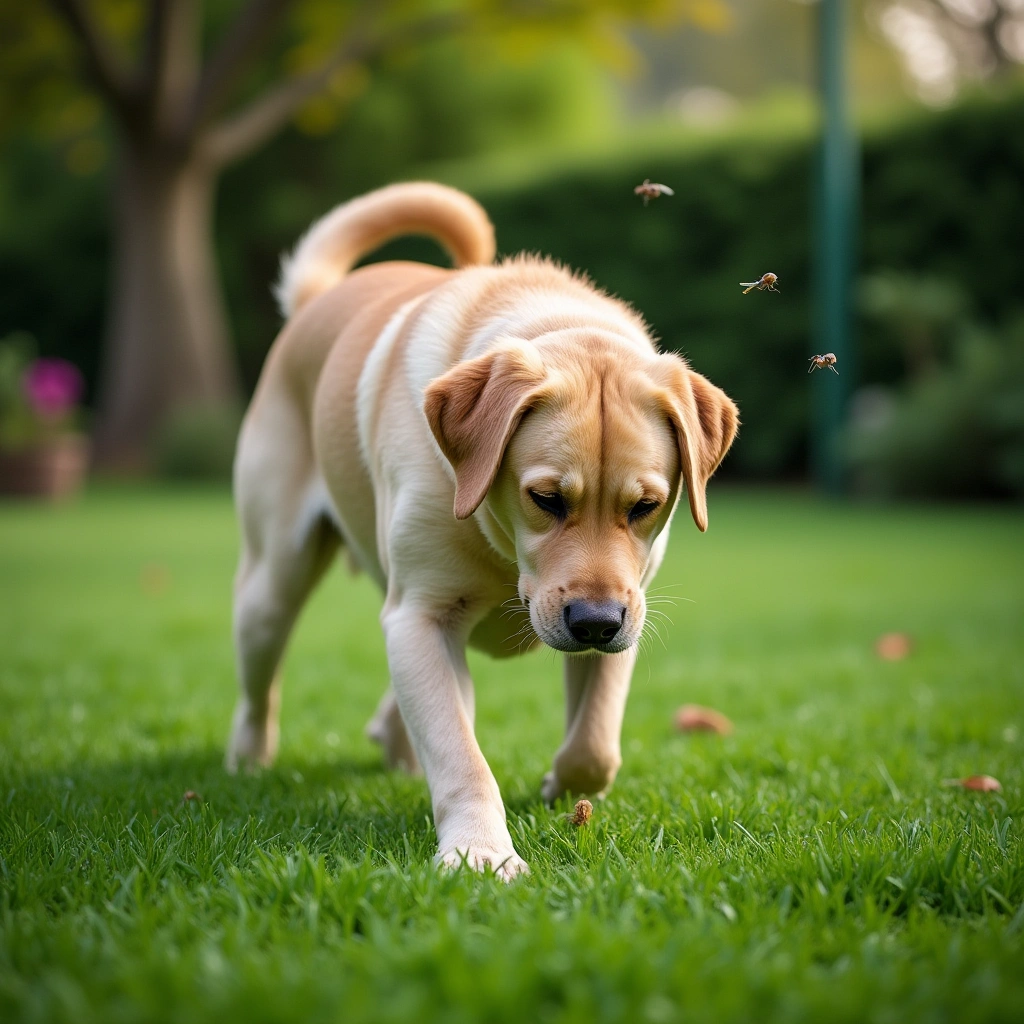
Safe Option #2: Corn Gluten Meal for Pre-Emergent Control
How Corn Gluten Meal Prevents Weed Growth
Corn gluten meal (CGM) offers a unique approach among pet safe weed killer options:
- Natural byproduct: CGM is a protein-rich powder produced during corn milling
- Pre-emergent action: Unlike most weed killers that attack existing plants, CGM prevents seeds from forming roots after germination
- Nitrogen source: Contains 9-10% nitrogen by weight, actually feeding established plants while preventing new weeds
- Selective timing: Must be applied before weed seeds germinate to be effective
- Environmental benefits: Biodegradable, renewable resource with minimal ecological impact
Dr. Nick Christians, who discovered corn gluten meal’s herbicidal properties at Iowa State University, explains: “The natural peptides in corn gluten meal inhibit root formation at the critical moment of germination. Since the weed can’t form a root, it dies as a sprout, never becoming established.”
Application Rates and Timing
Success with corn gluten meal depends on proper application:
- Recommended rate: 20 pounds per 1,000 square feet for most lawns
- Critical timing: Apply early spring (before crabgrass germinates) and early fall (before winter annual weeds germinate)
- Weather considerations: Apply during dry conditions followed by rainfall (or irrigation) within 1-3 days
- Effectiveness timeline: May take 2-3 seasons of consistent use to achieve maximum results
- Reapplication schedule: Remains effective for 5-6 weeks after application
Benefits and Limitations
As a pet safe weed killer option, corn gluten meal offers several advantages:
Benefits:
- Completely non-toxic to pets, even if ingested
- Doubles as a lawn fertilizer, improving grass health
- No application restrictions—pets can access treated areas immediately
- Long shelf life when stored properly
- Available in organic formulations for eco-conscious consumers
Limitations:
- Only works as a pre-emergent; doesn’t kill existing weeds
- More expensive than many chemical alternatives
- Requires precise timing and consistent reapplication
- Less effective in heavily weed-infested areas
- Weather-dependent results
Lawn care professional Jaime Rodriguez shares: “For my clients with pets, I recommend a two-part approach: using corn gluten meal as a preventative measure in early spring and fall, combined with spot-treatment of breakthrough weeds using other pet-friendly methods. This integrated approach provides excellent results while maintaining a safe environment for animals.”
Customer experience: “After my neighbor’s cat got sick from a traditional weed treatment, I switched to corn gluten meal for my lawn three years ago. The first year was honestly disappointing, but by year two, the difference was remarkable. Now I have very few weeds, and all the neighborhood pets can safely roam without concerns.” – Thomas K., Minnesota
Safe Option #3: Commercial Pet-Friendly Weed Control Products
Evaluating Pet-Safe Commercial Options
The growing demand for pet safe weed killer alternatives has led to numerous commercial products with safer formulations:
- Natural-based herbicides: Products using ingredients derived from plants or food-grade substances
- OMRI-listed options: Products certified for organic use by the Organic Materials Review Institute
- EPA Safer Choice labeled: Products meeting EPA standards for safer chemistry
- Rapidly biodegradable formulas: Products that break down quickly after application
- Transparency in ingredient listing: Companies that fully disclose all ingredients
According to market research firm Technavio, the natural and organic herbicide market is growing at over 9% annually, driven largely by pet and child safety concerns among consumers.
Top-Rated Pet-Friendly Commercial Products
Several companies have developed effective products specifically designed to be pet safe:
Green Gobbler Vinegar Weed & Grass Killer
- Active ingredient: 20% acetic acid (vinegar)
- Best for: Driveways, sidewalk cracks, garden beds
- Pet safety profile: Safe for pets after drying completely
- Effectiveness rating: 4.3/5 based on consumer reviews
- Application notes: Works within hours; most effective on young weeds
Dr. Earth Final Stop Weed & Grass Killer
- Active ingredients: Cinnamon oil, sesame oil, clove oil
- Best for: Spot treatment throughout landscaped areas
- Pet safety profile: Safe for pets after application dries
- Effectiveness rating: 3.9/5 based on consumer reviews
- Application notes: Pleasant scent, multiple applications may be needed
Sunday Weed Warrior
- Active ingredients: Iron HEDTA, plant oils
- Best for: Lawn broadleaf weeds
- Pet safety profile: Safe for pets after product dries (typically 1-2 hours)
- Effectiveness rating: 4.1/5 based on consumer reviews
- Application notes: Selective formula that doesn’t harm grass
Environmental toxicologist Dr. Sarah Matthews notes: “These newer formulations represent significant advances in balancing efficacy with safety. The key advantage is their rapid breakdown in the environment, which minimizes residual exposure risks for pets compared to conventional herbicides that can persist for weeks.”
Reading Labels and Understanding Claims
Not all “natural” or “eco-friendly” products are truly pet safe. When evaluating commercial options:
- Look beyond marketing terms: Words like “natural” or “eco” aren’t regulated and don’t guarantee safety
- Check for specific pet safety claims: Products tested for pet safety will typically state this clearly
- Review all ingredients: Some natural ingredients (like essential oils) can still irritate pets
- Understand warnings and precautions: Even pet-friendly products may require keeping animals away during application
- Research the company: Manufacturers with transparent practices typically provide detailed safety information
Veterinarian Dr. Lisa Weeth advises: “Pay particular attention to the product’s reentry instructions—the time recommended before allowing pets back onto treated areas. This information is typically based on evaporation and degradation rates of active ingredients and should be strictly followed even with safer formulations.”
Customer experience: “After my dog had a scary reaction to a ‘natural’ weed killer that contained oils he was sensitive to, I’ve become meticulous about researching products. Dr. Earth’s weed killer has been fantastic—works well on the dandelions in my yard and has caused zero issues with my three dogs who are constantly sniffing around.” – Rebecca T., Colorado
Safe Option #4: Boiling Water and Steam Treatments
The Simplest Pet-Safe Approach
Perhaps the most straightforward pet safe weed killer is one you can make in your kitchen:
- How it works: Thermal disruption of cell structures causes immediate plant death
- Application method: Carefully pour boiling water directly onto unwanted plants
- Target areas: Particularly effective for weeds in sidewalk cracks, gravel areas, and garden path edges
- Environmental impact: Zero chemical residue or environmental persistence
- Cost factor: Essentially free, requiring only water and heat
The boiling water technique works by literally cooking weed tissues, causing immediate cellular breakdown. Since water cools quickly after application, treated areas are safe for pets within minutes.
Steam Weeding Systems
For larger areas or more efficient application, steam weeding offers a scaled-up approach:
- Consumer options: Handheld steam devices designed specifically for weed control
- Commercial systems: Larger units for professional landscapers or extensive properties
- Temperature advantage: Steam maintains high temperature longer than water alone
- Penetration ability: Steam can penetrate deeper into root systems than boiling water
- Secondary benefits: May also reduce certain pest populations in treated areas
Commercial landscape manager Carlos Martinez reports: “We’ve switched to steam weeding for several of our clients with pets and children. The Weedinator steam system we use kills weeds down to the roots in seconds, and clients can let their pets back into the yard immediately after we’re done—no waiting period required.”
Best Practices for Thermal Weed Control
While simple in concept, thermal approaches require proper technique:
- Safety first: Use extreme caution with boiling water to avoid burns
- Volume matters: Larger/established weeds need more thermal exposure
- Root targeting: Direct the hot water or steam at the base of plants for best results
- Repeat treatments: Some persistent perennials may regenerate and require additional applications
- Selective use: Best for isolated weeds rather than large areas intermixed with desired plants
The primary limitation of thermal methods is the labor involved for larger areas, but for pet owners concerned about chemical exposure, this trade-off often proves worthwhile.
Customer experience: “I use the boiling water method for the weeds that pop up between my patio stones where my cats love to lounge. It’s amazingly effective on smaller weeds, costs nothing, and I know my pets are completely safe, even if they walk through the area immediately afterward.” – Michael J., Florida
Safe Option #5: Manual Removal and Prevention Techniques
Tools and Techniques for Physical Weed Control
Sometimes the safest approach to weed control is the most fundamental:
- Hand pulling: Most effective when soil is moist and roots can be fully removed
- Weeding tools: Long-handled weeders, hori hori knives, and stand-up weed pullers minimize back strain
- Hoeing and cultivation: Regular disruption of soil prevents weed establishment
- Weed torches: Propane-powered tools that provide targeted flame to destroy weeds
- Root barriers: Physical boundaries that prevent weed root intrusion
Landscape architect Jennifer Williams emphasizes: “Manual removal remains the gold standard for selective weed control in mixed plantings. When combined with mulching and proper plant spacing, it creates a sustained weed management system that requires no chemicals whatsoever.”
Preventive Landscape Practices
Creating weed-resistant landscaping reduces the need for weed killers of any type:
- Strategic mulching: 2-4 inches of organic mulch suppresses weed germination
- Landscape fabric: Professional-grade materials provide long-term suppression under mulch layers
- Competitive planting: Dense plantings of desirable species leave little room for weeds
- Proper irrigation: Drip systems and soaker hoses deliver water directly to desired plants without supporting weed growth
- Regular maintenance: Removing weeds before they set seed dramatically reduces future problems
These preventive measures work best as part of an integrated approach to create a naturally weed-resistant environment that’s inherently safer for pets.
Success Strategies for Busy Homeowners
For those with limited time, these efficiency tips help make manual methods more manageable:
- Zone approach: Divide your yard into sections and tackle one per week on rotation
- Little and often: Ten minutes of weeding daily is more manageable than hours on weekends
- Right timing: Weed after rain when soil is soft for easier removal
- Tool investments: Quality ergonomic tools make the job less physically demanding
- Family involvement: Turn weeding into a household activity with age-appropriate tasks
Professional gardener Michael Chen shares: “I recommend the ‘never walk empty-handed’ approach to my clients with pets. Simply pull a few weeds whenever you’re already in the yard with your dog. This consistent attention prevents weeds from establishing and eliminates the need for chemical interventions.”
Customer experience: “After my puppy got sick from a neighbor’s lawn treatment that drifted into my yard, I switched entirely to manual weeding combined with heavy mulching. It’s more work initially, but now that my landscape is established with proper mulch layers, I spend less time weeding than I used to spend applying treatments, and I never worry about my dog’s safety.” – Amanda S., Oregon
Safe Option #6: Organic Mulches and Ground Covers
How Mulches Suppress Weeds Naturally
Organic mulches provide a comprehensive approach to weed management:
- Light blocking action: Prevents sunlight from reaching weed seeds, inhibiting germination
- Physical barrier: Creates a mechanical obstacle to emerging seedlings
- Moisture regulation: Maintains even soil moisture that favors established plants over weeds
- Temperature moderation: Reduces temperature fluctuations that can trigger weed germination
- Soil improvement: Adds organic matter as it breaks down, improving soil structure
Research from the University of California shows that a 3-inch layer of organic mulch can reduce weed growth by up to 90% compared to bare soil, making it one of the most effective preventive weed control strategies.
Best Pet-Safe Mulch Options
Different mulch materials offer varying benefits and considerations:
| Mulch Type | Weed Suppression | Longevity | Pet Safety Considerations |
|---|---|---|---|
| Shredded Bark | Excellent | 2-3 years | Safe for most pets; avoid cocoa hull mulch (toxic to dogs) |
| Wood Chips | Very Good | 1-2 years | Generally safe; avoid fresh cedar chips for small pets |
| Straw | Good | 3-6 months | Safe but may attract rodents; can become moldy |
| Compost | Moderate | 6-12 months | Very safe and beneficial to soil health |
| Leaf Mold | Good | 1 year | Extremely pet safe and natural |
| Pine Needles | Very Good | 1-2 years | Safe for pets; good for acid-loving plants |
Veterinarian Dr. Thomas Wilson notes: “From a pet safety perspective, most organic mulches pose minimal concerns compared to chemical weed control. The main exceptions are cocoa hull mulch, which contains theobromine toxic to dogs, and certain fresh wood mulches that may contain irritant oils until weathered.”
Living Ground Covers as Weed Suppressors
Beyond mulches, living ground covers provide a dynamic approach to weed suppression:
- Aggressive spreaders: Plants like creeping thyme, sedum, and clover that outcompete weeds
- Shade-tolerant options: Sweet woodruff, pachysandra, and vinca for under trees
- Lawn alternatives: Microclover, moss, or low-growing perennial peanut in place of traditional turf
- Edible options: Strawberries, prostrate rosemary, or creeping oregano in appropriate settings
- Native selections: Region-specific ground covers adapted to local conditions
Landscape designer Maria Rodriguez explains: “Living ground covers create a self-maintaining system that naturally suppresses weeds through resource competition. Once established, these plants form a dense mat that few weeds can penetrate, creating a visually appealing and pet-safe landscape that reduces or eliminates the need for weed killers.”
Many ground covers also offer additional benefits like erosion control, pollinator support, and fragrance, creating multifunctional landscapes that are both beautiful and pet-friendly.
Customer experience: “We replaced half our lawn with creeping thyme and the other half with microclover, using sheet mulching to kill the grass without chemicals. It took about a season to establish, but now two years later, we have a gorgeous, virtually weed-free yard that our dogs love to lounge on, and we haven’t used any weed control products since the conversion.” – Daniel R., Washington
Risk #1: Hidden Dangers in “Natural” Products
Natural Doesn’t Always Mean Safe
An important caution for pet owners: “natural” weed killers aren’t automatically safe:
- Essential oil toxicity: Many essential oils (including clove, citrus, and mint oils used in natural weed killers) can be toxic to pets, especially cats
- Concentration matters: Natural ingredients in high concentrations may pose risks not present in their diluted forms
- Species-specific concerns: Dogs and cats metabolize compounds differently; what’s safe for one may harm another
- Individual sensitivity: Just like humans, individual pets may have allergic or adverse reactions to certain natural substances
- Misleading marketing: Some products labeled “natural” contain additional ingredients not prominently disclosed
Veterinary toxicologist Dr. Jennifer Parker warns: “I’ve treated numerous pets for adverse reactions to supposedly ‘natural’ or ‘organic’ weed killers. Essential oils in particular can cause liver toxicity in cats, whose bodies lack certain enzymes needed to metabolize these compounds.”
Shop Amazon
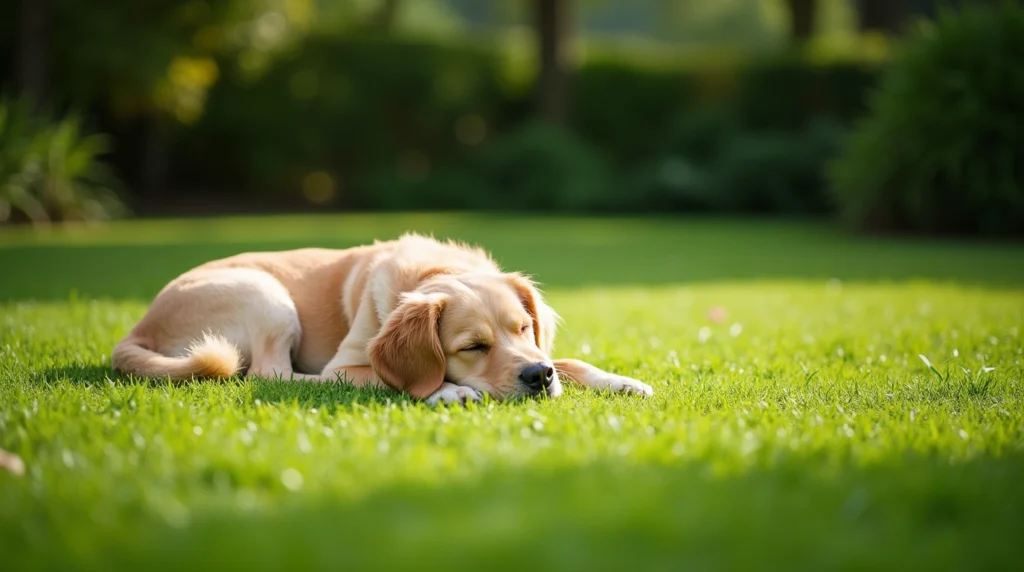
Keep your pets safe with a non-toxic weed killer! Shop now on Amazon for a pet-friendly solution to a weed-free yard.
Specific Natural Ingredients to Approach with Caution
When evaluating pet safe weed killer options, be particularly careful with products containing:
- Concentrated citrus oils: Can cause vomiting, diarrhea, and dermatitis in both cats and dogs
- Clove oil (eugenol): Potential liver toxicity, especially in cats
- D-limonene: Commonly used in natural weed killers but can cause skin irritation and liver problems
- Tea tree oil: Highly toxic to cats even in small amounts
- Pine oil: Can cause respiratory irritation and central nervous system depression
- Salt (sodium chloride): While not immediately toxic, high concentrations in soil can harm pets’ paw pads and damage the soil ecosystem
Evaluating Claims and Reading Labels
To navigate these complexities:
- Research specific ingredients: Don’t rely on broad terms like “natural oils”
- Check concentration levels: Higher percentages increase potential risks
- Look for third-party safety verification: Certifications from veterinary or environmental organizations
- Follow application instructions precisely: Even safer products require proper use
- Consider your specific pets: Cat owners need to be especially cautious with essential oil-based products
Environmental scientist Dr. Michael Torres advises: “Request the Safety Data Sheet (SDS) for any weed control product you’re considering. Manufacturers must provide these upon request, and they contain more detailed toxicological information than product labels.”
Risk #2: Environmental Impact and Secondary Exposure
Broader Ecological Considerations
Even products safe for your pets may affect other aspects of your yard ecosystem:
- Beneficial insect impact: Some natural weed killers harm pollinators and beneficial insects
- Soil microbiome effects: Certain ingredients disrupt healthy soil biology
- Water contamination: Runoff can affect aquatic environments
- Non-target plant damage: Many weed killers can’t distinguish between weeds and desirable plants
- Wildlife considerations: Products safe for dogs and cats might affect birds, amphibians, or small mammals differently
Dr. Elena Rodriguez, environmental toxicologist, explains: “We’re increasingly understanding that yard ecosystems are interconnected. A product that’s safe for your dog might still harm earthworms that maintain soil health or beneficial insects that control pests naturally.”
Secondary Exposure Pathways
Beyond direct contact, pets may be exposed to weed killers through secondary routes:
- Bioaccumulation: Some compounds concentrate in animals that consume treated plants
- Food chain effects: Pets that hunt small wildlife may be exposed through prey
- Track-in concerns: Residues from treated areas may be brought indoors on paws
- Grooming behavior: Cats in particular may ingest residues during normal grooming
- Water bowl contamination: Drift or runoff may contaminate outdoor water sources
Research from Purdue University found that herbicide residues can persist on dog fur and paws for days after walking in treated areas, creating ongoing exposure through normal grooming behavior.
Creating Truly Safe Integrated Approaches
To address these broader concerns:
- Zone your yard: Designate high-standards areas where pets frequent
- Timing considerations: Apply even safer products when pets are indoors
- Buffer zones: Create untreated boundaries near water features or wildlife habitat
- Integrated approaches: Combine multiple low-impact methods rather than relying on a single solution
- Monitor effectiveness: Adjust your approach based on results and observations
Landscape ecologist James Wilson recommends: “Consider the ecological service that some ‘weeds’ provide—dandelions feed early pollinators, clover fixes nitrogen in the soil. Redefining acceptable levels of some beneficial weeds creates more resilient landscapes that require less intervention while supporting healthier ecosystems for pets and wildlife.”
Making the Best Choice for Your Yard and Pets
Assessing Your Unique Situation
The ideal pet safe weed killer approach depends on your specific circumstances:
- Pet behaviors: Consider how your pets interact with your yard
- Pet species: Cats, dogs, rabbits, and other pets have different sensitivities
- Yard size and type: Different solutions work better for different landscapes
- Weed pressure: Heavy infestations may require more intensive approaches
- Time and budget constraints: Balance effectiveness with practical limitations
- Regional factors: Climate and local regulations affect available options
Veterinarian and garden enthusiast Dr. Sarah Johnson suggests: “Start by observing exactly how your pets use your outdoor space. Are they diggers? Grazers? Do they roll in the grass? This behavior inventory helps prioritize which areas need the safest approaches and which might allow more flexible management.”
Creating a Pet-Safe Weed Management Plan
An integrated approach often yields the best results:
- Identify priority zones: Focus highest safety standards on areas pets frequent most
- Seasonal strategy: Different techniques work better at different times of year
- Preventive foundation: Emphasize mulching, proper plant spacing, and other preventive measures
- Intervention hierarchy: Start with safest methods, escalating only when necessary
- Documentation: Track what works in your specific conditions for future reference
Landscape designer Thomas Chen recommends a three-zone approach: “I help clients create a ‘safety zone’ with only manual and preventive methods, a ‘transition zone’ where safe organic products might be used occasionally, and ‘low-traffic zones’ where slightly stronger options could be considered if absolutely necessary.”
When to Consult Professionals
Consider professional help in these scenarios:
- Severe infestations: When DIY approaches haven’t controlled major weed problems
- Special needs pets: Animals with health conditions requiring extra precautions
- Environmental sensitivities: Properties near water or with specific ecosystem concerns
- Time constraints: When personal capacity for manual methods is limited
- Specialized challenges: Certain stubborn weeds that resist standard approaches
When hiring professionals, veterinary behaviorist Dr. Elena Garcia advises: “Ask specifically about their experience with pet-safe practices. Request detailed information about products they use, required waiting periods, and their willingness to adapt their approach to accommodate your pets’ specific needs.”
FAQ Section: Pet Safe Weed Killer Options
How long should pets stay off treated areas after using weed killers?
Waiting periods vary significantly depending on the product:
- Conventional chemical herbicides: Generally 24-72 hours, or until completely dry (check product label)
- Vinegar-based solutions: Until completely dry, typically 2-4 hours in sunny conditions
- Essential oil products: 24 hours recommended despite natural origins due to potential sensitivities
- Iron-based selective herbicides: Until dry, usually 3-4 hours
- Corn gluten meal: No waiting period required
- Boiling water/thermal methods: 5-10 minutes until cooled
- Manual removal: No waiting period
Dr. Jason Williams, veterinary toxicologist, emphasizes: “Product labels specify minimum waiting periods based on average risk. For pets that chew plants or have existing health conditions, I recommend doubling the suggested waiting time as a precaution.”
Remember that weather conditions affect drying times—humid or cool weather extends the necessary waiting period for all liquid applications.
Can I make effective weed killers from household ingredients that are safe for pets?
Yes, several household items can be combined to create effective pet safe weed killer solutions:
- Vinegar-Salt-Soap Spray:
- 1 gallon white vinegar
- 1 cup table salt (dissolved first in warm water)
- 1 tablespoon liquid dish soap
- Best for: Driveways, sidewalk cracks, areas away from desirable plants
- Pet safety level: High (once dry)
- Lemon Juice Solution:
- 2 cups lemon juice
- 1 quart white vinegar
- 1 tablespoon dish soap
- Best for: Spot treatment of isolated weeds
- Pet safety level: Moderate (keep pets away until dry)
- Boiling Water and Salt:
- 2 cups salt dissolved in 1 gallon boiling water
- Best for: Driveway cracks, gravel areas
- Pet safety level: High (once cooled)
- Baking Soda Application:
- Wet weeds and apply baking soda directly to foliage
- Best for: Individual weeds in lawn areas
- Pet safety level: Very high
Horticultural expert Maria Santiago notes: “Household solutions are most effective on young weeds and may require repeated applications for established perennials. Their main advantage is using ingredients you already have on hand with safety profiles you understand—particularly valuable for households with pets that have specific sensitivities.”
What are the safest weed control options for households with multiple types of pets?
When managing multiple pet species, consider these specially adapted approaches:
- Manual removal: Universally safe for all pets but labor-intensive
- Steam weeding: Safe for all species once the area cools
- Mulching: Safe across species (avoid cocoa hull mulch with dogs)
- Corn gluten meal: Safe for all pets, including small mammals and birds
- Barriers and prevention: Landscape fabric under mulch creates multi-year protection
Particularly cautious approaches are recommended for:
- Homes with cats: Avoid all essential oil products (cats lack enzymes to process these compounds)
- Households with small mammals: Use extra caution with ferrets, which have similar metabolic limitations to cats
- Bird owners: Consider that birds’ respiratory systems are highly sensitive to airborne residues
- Reptile habitats: Ensure products won’t contaminate terrarium materials or feeding areas
Exotic animal veterinarian Dr. Amanda Chen advises: “In multi-pet households, default to the highest safety standard required by your most sensitive pet. In practical terms, this typically means avoiding all essential oil-based products if you have cats, ferrets, or birds, and focusing instead on mechanical and barrier methods.”
Are there any effective pet safe weed killers for lawn weeds that won’t kill grass?
Selectively controlling weeds while preserving grass presents special challenges when prioritizing pet safety:
- Iron-based herbicides (like Fiesta and Whitney Farms Lawn Weed Killer): Target broadleaf weeds while sparing grass; safe for pets after drying completely
- Corn gluten meal: Prevents weed seeds from germinating while feeding established grass
- Manual removal tools: Specialized weed pullers extract individual dandelions and other tap-rooted weeds
- Overseed with competitive grass varieties: Denser turf naturally suppresses weeds
- Spot-treatment approach: Apply vinegar solutions directly to individual weeds using a paintbrush to avoid grass contact
Lawn specialist Robert Thompson explains: “For established lawns with pet traffic, I recommend improving turf density through proper mowing height (generally higher), appropriate fertilization, and overseeding with locally-adapted grass varieties. This cultural approach creates grass that naturally outcompetes weeds, reducing the need for herbicides altogether.”
Some pet owners also embrace more weed-tolerant lawn approaches, like “freedom lawns” that incorporate clover, violets, and other low-growing broadleaf plants that many pets find more interesting and beneficial than monoculture grass.
How can I keep my pets safe while managing weeds in vegetable gardens?
Vegetable gardens require special consideration since both pets and humans will have direct contact with edible plants:
- Physical barriers: Temporary fencing during and after weed treatments
- Timing strategy: Treat when pets are indoors or otherwise occupied
- Heavy mulching: Prevents most weeds from establishing between plants
- Flame weeding: Targeted propane weeding tools work well between rows
- Hand weeding: Most appropriate within planted rows
- Garden design: Wide rows and grid patterns facilitate easier weed management
Dr. Emily Thomas, veterinary nutritionist, advises: “For vegetable gardens, I recommend exclusive use of mechanical methods—hand-pulling, hoeing, and mulching—rather than any liquid applications. This eliminates concerns about residue on produce that either pets or humans might consume, creating the safest possible approach for everyone.”
Conclusion: Creating a Pet-Safe Weed Management Strategy
Maintaining a weed-free yard while ensuring your pets’ safety doesn’t require choosing between effectiveness and health risks. The six pet safe weed killer options explored in this guide—vinegar-based solutions, corn gluten meal, commercial pet-friendly products, thermal treatments, manual removal techniques, and organic mulches—provide a comprehensive toolkit for addressing various weed challenges without endangering your animal companions.
Understanding the two key risk factors—the potential dangers hiding in some “natural” products and the broader ecological impacts of any weed control method—helps create truly safe approaches tailored to your specific landscape and pets. Remember that the most sustainable weed management strategies typically combine multiple techniques, emphasizing prevention while providing effective intervention when needed.
As pet owners increasingly prioritize safety alongside effectiveness, manufacturers continue developing improved pet-friendly options. This evolution in the market means that pet owners no longer need to compromise between a beautiful yard and their pets’ wellbeing—both are achievable with the right approach.
If you’re transitioning from conventional weed control to pet-safer methods, start with a thoughtful assessment of your yard’s specific needs and your pets’ behaviors. Consider implementing changes gradually, focusing first on high-traffic pet areas while developing your integrated weed management strategy. Document what works in your specific conditions, and don’t hesitate to adjust your approach based on results.
By making informed choices about pet safe weed killer options and implementing an integrated management plan, you create outdoor spaces that are beautiful, functional, and—most importantly—safe for the four-legged family members who share and enjoy them.
Have you found particular success with pet-friendly weed control methods? Share your experiences in the comments to help other pet owners navigate this important aspect of responsible pet ownership and landscape management.

